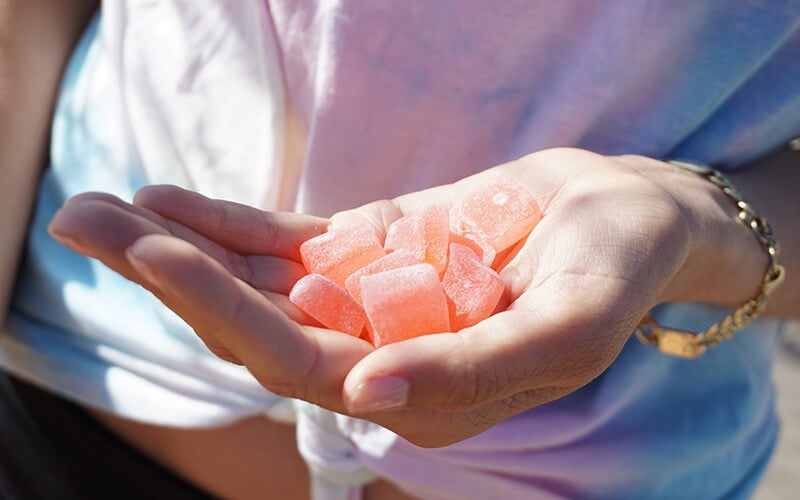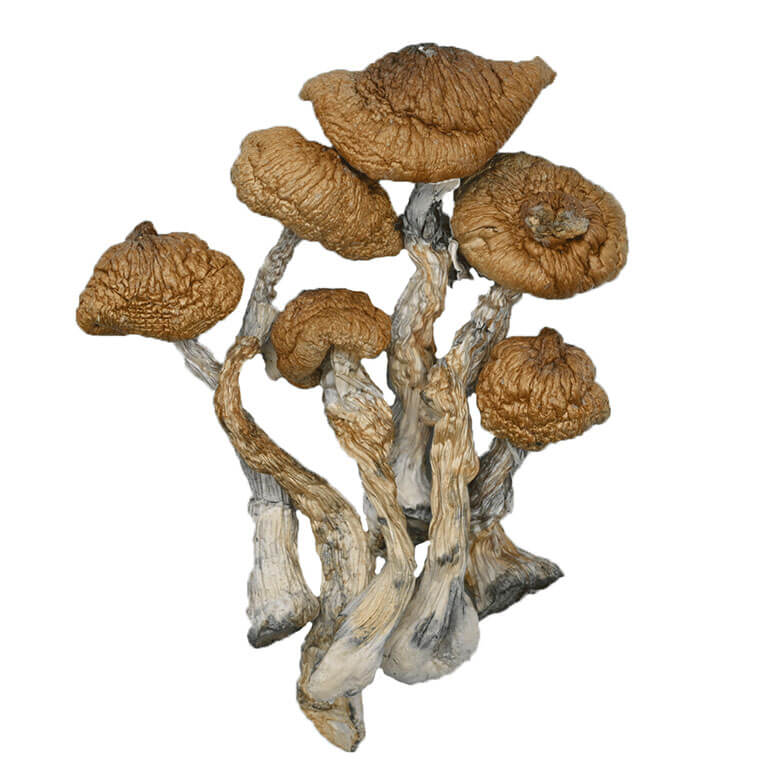The satisfaction of rolling a home-grown joint can inspire any cannabis enthusiast to grow their own plants. However, cultivating healthy cannabis buds is one of the steepest learning curves for first-time growers. One of the common threats that you’re likely to encounter during cannabis cultivation is bud rot.
Also known as Big Bud Disease, bud rot attacks and kills your biggest, thickest buds. And if you don’t identify and fix the problem early, it can stunt your plants, ruin the buds, and eventually reduce your yields.
Luckily, the causes of bud rot are mostly straightforward. So if you’re well aware of them as well as the prevention methods, you can easily avoid the disease. Here’s everything you need to know about cannabis bud rot, from its causes to how to diagnose and treat the disease.
What Causes Cannabis Bud Rot?
Bud rot is the generic term for a type of fungus or mould known as Botrytis cinerea. It occurs at the cannabis buds’ cores and can break down the surrounding bud if it’s not detected early enough.
The dense buds in cannabis plants create the perfect trap for humidity. So if you don’t control your plant’s humidity levels, water vapour remains trapped and continues to build up inside the bud.
Eventually, the water vapour condenses, creating the ideal humid conditions for Botrytis mould to develop in the nucleus of cannabis buds. While the rest of the cannabis plant is at risk of mould infestation, the buds are the most vulnerable. Botrytis causes the buds to decay from the inside. When you open one of the infected buds, you’ll notice a mouldy dark gray or brown colouring.
You will most likely notice the appearance of Botrytis cinerea during the plant’s flowering stage. However, the fungus usually creeps into the bud tissue earlier on before the plant starts to flower, but remains inactive. Only when the environment becomes humid does the mould start to rot the cannabis buds from inside. Generally, the biggest and thickest buds suffer the most damage from bud rot.
Once bud rot develops, it may start to generate and transmit spores, infecting other plants. Thus, bud rot disease is extremely dangerous, particularly in dense grow rooms. Apart from cannabis buds, the Botrytis cinerea mould also affects other types of crops, including peppers, shrooms, cucumbers, roses, basil, and tomatoes.
What Conditions Trigger Bud Mold?
Mould spores occur everywhere. But they will plague your cannabis plants in specific conditions, including high humidity, fluctuating temperatures, stagnant air, and insect wounds
- High humidity: The main contributor to mould infestation and bud rot is high humidity levels (over 55 to 60 percent RH) in indoor grow rooms. For outdoor growing, continuous rainy weather and frost often lead to humid conditions where mould thrives. This, however, does not necessarily mean that your weed plants will automatically get bud rot in such growing conditions. Some growers cultivate weed in even higher humidity levels than 60 percent but do not suffer bud rot. So what tips the scales?
- Stagnant air: If the air inside your grow room is humid and dormant, then your buds are at a greater risk of getting bud rot. This is because dense buds and leaves tend to trap water vapour, which may later condense into water droplets if there’s no proper air circulation through the plant.
- Fluctuating temperatures: Bud rot thrives in fluctuating temperatures. Generally, you should aim to keep temperatures between 21 degrees Celsius to 26 degrees Celsius. While temperature control is important for all growers, it’s particularly relevant for greenhouse and outdoor growers because temperatures in these conditions can change drastically over a short timeframe.
- Insect wounds: Botrytis cinerea is a weak pathogen, meaning it won’t land and penetrate through healthy plant tissues. Instead, it enters a cannabis plant through a wound inflicted by a pruning cut or insect. So you should always keep your plants insect-free and prune them with caution.
That said, cannabis bud rot is more of an issue for outdoor growers than indoor and greenhouse growers. This is because it’s nearly impossible to control the environment outdoors.
How to Identify Bud Rot: The Signs
Bud rot goes through several stages before it finally matures and spreads to other plants. So you’ll notice varying signs depending on the life stage of the cannabis plant. If you’re unsure of how to identify bud rot, here are a few signs to search for:
Initial Stage
- Dried up, dead leaves: Bud rot stems from the inside of your buds and later extends outside. So by the time you notice the signs on the outside, the mould would have already spread extensively. Check for unexpected and random dead leaves amongst the cannabis buds. This is usually the first telltale sign of the presence of mould within the buds. The dead leaves appear in patches and often pull apart easily. An infected bud will stand out compared to the rest, making it rather easy for first-time growers to notice when bud rot is creeping in on their plants. That said, the changes occur quickly and might take a day or two. So you should check your buds more frequently.
- White, fluffy growth: Another sign is the presence of fluffy white mould in the middle or on the sides of cannabis buds. The white and fluffy mould may be seen only for a day before it darkens. So you’ll probably never notice this sign before the mould darkens and begins rotting the buds from the inside out.
Advanced Stages
- Discoloured buds: In the advanced stages, the bud rot causes the buds to easily separate at the base of the affected leaves, allowing you to see the inside. The initial white mould quickly turns into brown, gray, or purple and penetrates deep into the thick buds as the bud rot spreads its tentacles.
- Dark speckled dust: After bud discoloration sets in, the mould will start to reproduce, forming spores. When you carefully inspect the affected buds, you’ll notice that they are dusty inside. Well, the dust is the fungus spores that easily float and spread when you crack open the infested bud. Exercise caution to avoid inhaling the dust and allowing the speckled dust to spread onto neighbouring cannabis plants.
- Yellow leaves: You might also notice the sudden appearance of yellow leaves on some of your largest buds. That is a sign of the potential presence of mould fungus at the foot of the leaves. When you look inside, you’ll notice the leaves wilting and falling out, with the sight of mould or darkened spots in the middle.
How to Stop the Spread of Bud Rot
Mould and fungus start to grow inside of a dense cannabis bud, so that’s where your inspection should start. Here’s how you can stop it from spreading further:
Surgical Method
Once a section of a single bud begins to display signs of mould, the rot can easily penetrate the rest of the tree and other buds on the plant. What you need to do is cut the part of the bud that’s affected using a sterile cutting tool.
Make the cut between two and four inches below the mould-infested bud. If you need to remove multiple infected buds, make sure you sterilize the cutting device between cuts and finally after use. When you’re done, dispose of the infected buds in a sealed bag to prevent the mould spores from spreading.
Remember to prevent mouldy plants from coming into contact with the rest of the healthy crops. So move the infected plant to “quarantine” in a dry, cool area with excellent airflow. You should wait until the plant recovers before moving it back to the grow space.
If a large section of the bud is affected, it’s best to remove the whole plant from your grow space. Continue to examine the rest of your cannabis plants because bud rot spreads rapidly and may plague your entire harvest.
UV Light Exposure
UV light can break down moulds in their initial stages of development. So you’ll need to detect the bud rot problem early enough to increase your chances of successfully controlling these organisms with UV light exposure.
Fix the Environmental Conditions
If you detect bud rot signs in your cannabis plants, it means that your grow environment is not ideal. So, apart from removing the infected buds, you also need to improve the growing conditions. Here’s how you can achieve that:
- Control humidity levels: You won’t see Botrytis cinerea in dry conditions. That’s why you need to keep the humidity levels inside your grow space low. First, irrigate your plants cautiously, and invest in a dehumidifier or HVAC to keep humidity below 50 percent RH. You’ll also need to set up humidity meters all over the greenhouse. Even the smallest greenhouse should have at least two humidity meters.
- Make sure there’s good airflow: Always make sure there’s sufficient air moving below, on top, and through the cannabis plant. You can mount a series of fans on the wall, ceiling, or the floor to give your cannabis plants access to cool, fresh air.
- Control the temperatures: Avoid exposing your weed plants to oscillating temperatures. Aim to keep your temperatures between 21 to 26 degrees Celsius.
- Avoid rain exposure: For outdoor cultivation, it might be hard to control the climatic conditions. Therefore, consider building an improvised structure to protect your crops from rain. You should also shake your plants if they’re covered in dew or if they’re wet from the rain. Alternatively, an electric leaf blower can help you get rid of excess water from your plants.
- Space your plants well: Crowding a bunch of plants with plenty of buds in a limited space may increase the prospect of bud rot. So you should never allow your buds to touch each other. Give each large bud enough space by itself to reduce wet spots between them. This means removing leaves from bushy, leafy plants.
- Pick the best genetics: If you’re not keen on providing optimal growing conditions, your best bet is to select highly resilient Sativa-dominant strains. Sativas grow taller and wispy with fewer, thicker buds, reducing the likelihood of bud rot. Take, for example, Orange Sherbet Auto. It is a Sativa-dominant strain that grows tall and dry and is well adapted to dealing with humidity problems. That said, Indicas are not the best strains to grow if you’re trying to avoid bud rot. This is because they have dense, wide leaves and large buds. So if you prefer Indica strains, be ready to defoliate the dense leaves regularly to keep cannabis bud rot at bay.
Preventing Bud Rot Post-Harvest
Remember, bud rot is not limited only to the cannabis cultivation stage. It can also occur during the drying and curing stages. The trick is to control the humidity levels and temperature in your drying room. Ideally, you should maintain a temperature range of 15 degrees C to 25 degrees C and relative humidity of 60 percent.
Apart from creating the best possible drying environment, you can adopt other effective measures to prevent the conditions in which fungus and mould thrive. These include speed-drying and leaving room between hanging cannabis branches as they dry.
Marijuana bud rot is a nightmare for any cannabis grower. It targets the dense, large buds, making them unfit for consumption. And if left untreated, it can spread to other parts of the plant and eventually affect your overall yield.
It’s hard to recognize a bud rot at its initial stages. So it might eat up your buds slowly and will have spread to other plants by the time you notice it. That said, the best way to screen your buds for bud rot is with a magnifying glass or loupe.
To avoid bud rot, it is important to provide the right growing conditions for your plants. Your buds need moderately low humidity, airflow circulation, and steady temperatures to prevent mould infestation. You can also choose a more resilient Sativa-dominant strain, which can give you an advantage against Botrytis fungus and other diseases.
Best Sellers
Buy My Weed Online has everything you need, from premium strains to edibles and concentrates. With unbeatable prices, our online dispensary is guaranteed to be your go-to for all of your cannabis needs.
Shop now and join the thousands of satisfied customers who have already made us their top choice.



























